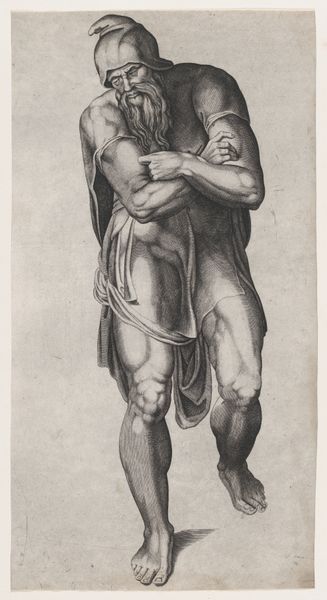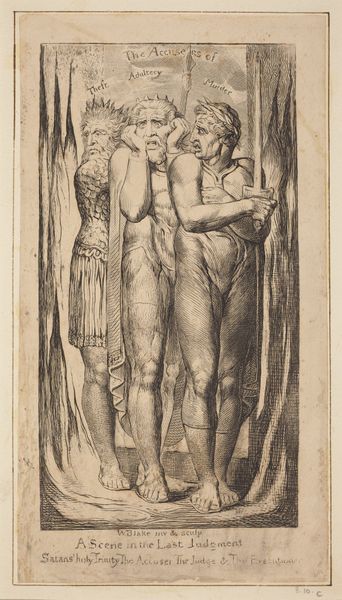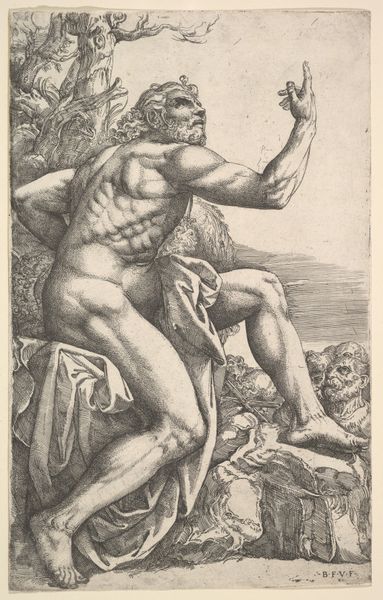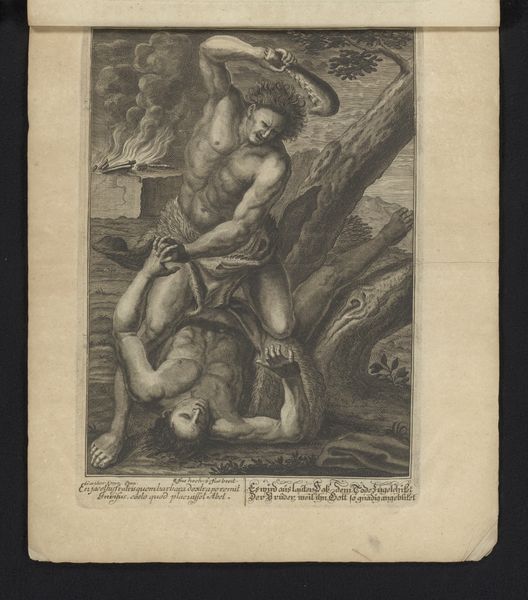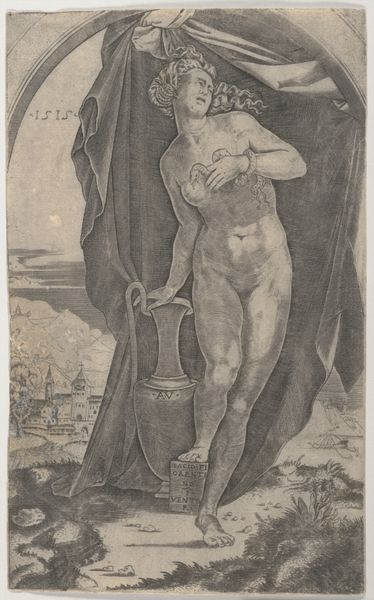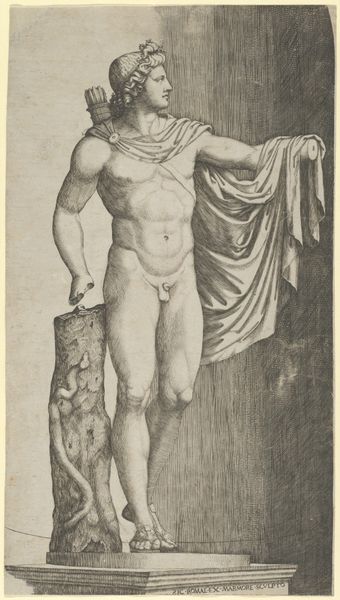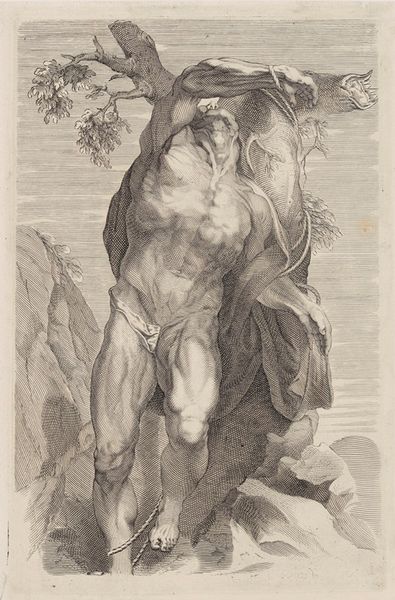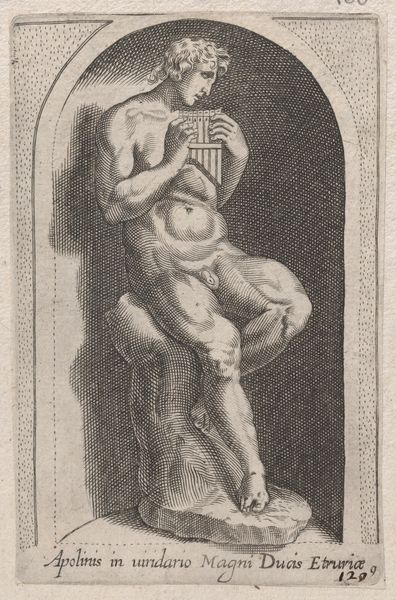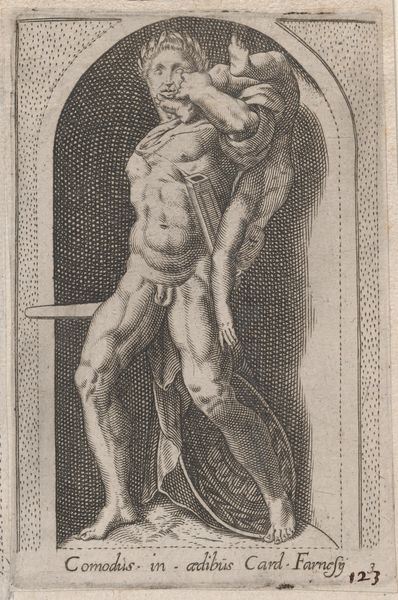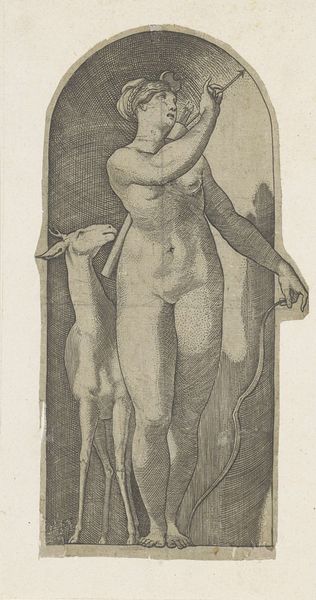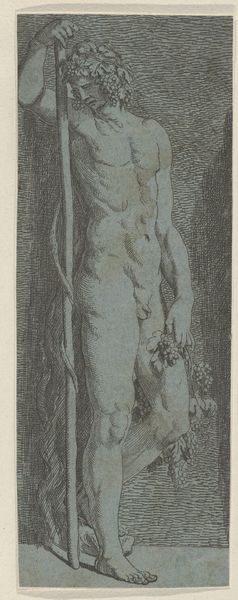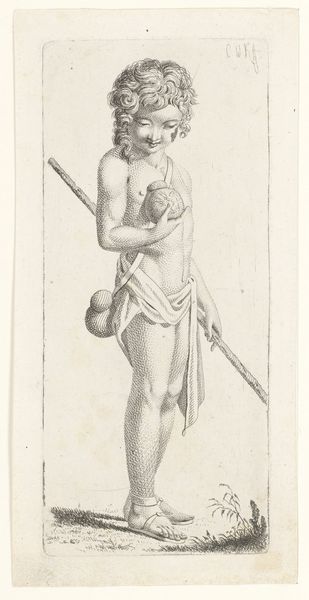
print, engraving
#
portrait
# print
#
figuration
#
romanticism
#
line
#
history-painting
#
engraving
Copyright: National Gallery of Art: CC0 1.0
Editor: This is William Blake’s "Joseph of Arimathea Among the Rocks of Albion," made sometime between 1803 and 1810. It's an engraving. The figure of Joseph looks so stoic and vulnerable against this stark, rocky landscape. What stands out to you? Curator: It's interesting how Blake positions Joseph within a geological context, "among the rocks." Let’s consider the materiality of engraving itself—cutting into a metal plate to produce this image. What implications might that process, that labor, have on our understanding of the subject matter? Editor: So, thinking about the work put into creating the image… does it connect Joseph's suffering to the suffering inherent in the artistic process? Curator: Precisely. Blake, trained as an engraver, was acutely aware of the labor involved. He often challenged the hierarchy that elevated painting over printmaking, which he saw as more democratized through its reproductive capabilities. Think about who consumes these images. Editor: So, by using engraving, he’s making art more accessible, which democratizes the image of Joseph, a religious figure. I see, the method of production, engraving, is essential for that to happen. Curator: Exactly. Consider too, the Industrial Revolution happening at the time. The individual artistic act of engraving, pushing back against mass-produced imagery. Editor: It’s all tied together! The materials, the historical moment, the artistic statement. Curator: A perfect encapsulation. Seeing art through this lens allows us to connect these broader themes to the intimate details of Blake's practice.
Comments
No comments
Be the first to comment and join the conversation on the ultimate creative platform.
